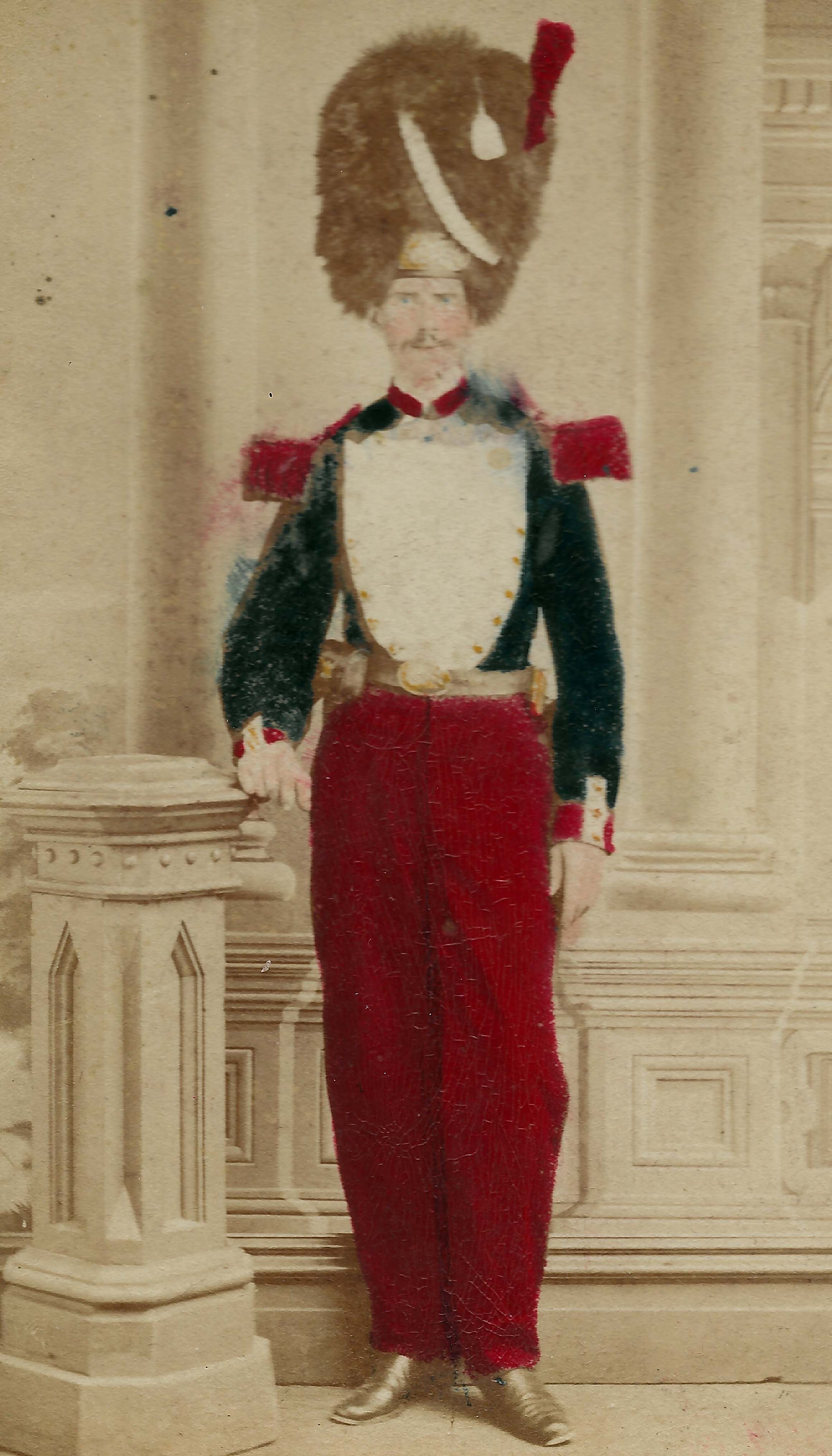
Location: San Francisco, San Francisco County
Inclusive dates of units papers: 1860-1881

D. 0. Regan, Captain; commissioned April
20, 1860
C. B.. Grant, First Lieutenant; commissioned April 20, 1860
George T. Knox, Captain; elected November
7, 1861; commissioned November 26, 1861
James McGrath, First Lieutenant; elected November 7, 1861; commissioned
November 26, 1861
Charles Heffernan, Captain; elected December
13, 1863; commissioned December 13, 1863
James McGrath, First Lieutenant; reelected: December 13, 1863
Thomas N. Cazneau, Captain; commissioned
August 24, 1865
John Cahill, First Lieutenant; commissioned August 24, 1865
Mathew Canavan, Captain; elected March 7,
1871; commissioned March 11, 1871
John H. McMenomy, First Lieutenant; elected March 7, 1871; commissioned
March 11, 1871
The McMahon Guard was organized on December 28, 1859 ,in San Francisco, and D. O. Regan and C. B. Grant were elected Captain and First Lieutenant respectively. The Bond for arms was duly filed and on July 2, 1861, General Kibbe issued a stand of sixty muskets and all the necessary accoutrements to the company.
General Kibbe stated that this was a well drilled and well officered company, numbering sixty-three men, all well equipped and composed of proper material for service. [1] The files in the Adjutant General's Office indicate that the unit was very faithful in drilling, having drilled twice a week for several months before officially organizing and being mustered into the service of the State.
There are no particular activities recorded and when in 1866 the Legislature ordered the membership of the National Guard reduced and companies with small muster rolls mustered out of service, the McMahon Guard was one of the companies disbanded. However, there is an old maxim that "You can't keep a good man down", which often applies to organizations as well as individuals, so the McMahon Guard did not stay mustered out. In response to the request of the disbanded company on February 10, 1871, a Special Order No. 6 was issued by the Adjutant General ordering the company mustered in the service, which was accomplished on. February 16, 1871. The reorganized unit was designated as McMahon Grenadier Guard, Company H, Third Regiment of Infantry, Second Brigade.
After reentering the service the unit drilled
faithfully and each year increased in efficiency. Target records
reveal a steady advancement until in 1878 the company made a percentage
score of 54.66 which was the fifth highest average score made
in the National Guard. However, in the following two years their
average percentage of 1878 was not maintained. [2]
In the annual Inspection Reports of Major Inspector F. G. Smith
of the Second Brigade, for 1878 and 1879, the McMahon Guard made
a rating of 71.15 and 80.00 for the respective years, indicating
that the company was one of the best in the regiment in discipline,
drill, condition of their arms, equipment, uniforms, and the manner
in which the records were kept.[3] Again in 1880 Major Smith reported
that the McMahon Grenadier Guard, was the best drilled, disciplined,
and equipped unit in the Third Regiment,.
and presented a very good appearance. [4]
In 1877, this company in the name of the State attempted to convict Arthur McGurren, who had been dishonorably discharged by Colonel Mason for being in possession of a "State Uniform" and refusing to surrender it. The case was tried in the Criminal Court and McGurren was acquitted. The verdict established a dangerous precedent, in that a militia man on leaving a company could take a uniform furnished by the State and be immune to any redress whatever.
The soldier's life is not composed of social activities and parades alone, but frequently he is called upon to face the serious situations arising during labor strikes involving threatened mob action or the calling to arms in defense of his country. On November 10, 1877, the McMahon Guard with the Second Brigade was called into active service at the request of the Mayor of San Francisco who was anticipating trouble because of the intense labor and anti-Chinese sentiment that prevailed at that time. After nine days that consisted for the most part of preparing for any emergency and the guarding of State property, the companies were dismissed.[5] Again on January 16, 1878, the Third Infantry Regiment, to which the McMahon Guard belonged, was under arms for eleven days, but no serious outbreak occurred. The seriousness of the situation was revealed when a Committee of Safety was formed and in a short time raised forty thousand dollars to enlist, train and equip on thousand men. These trained troops would be independent of any civil authority, and a recurrence of the situation that existed during the Vigilante days in 1856 was averted, when the Citizens Committee was persuaded to use the money to strengthen and equip the National Guard. The beneficial and liberal momentary action on the part of the citizens during this critical period in San Francisco had the effect of infusing a new spirit of enthusiasm in the ranks of the State forces, and this influence was felt throughout the State in the increased interest manifested by the officers and members, in largely increasing the membership and generally promoting the efficiency of the State Militia. [6]
August 10, 1881, the name McMahon was dropped
and this company thereafter was known as Company A. For additional
information regarding this unit refer to Company A, First Infantry
Regiment, Second Brigade.
Footnotes